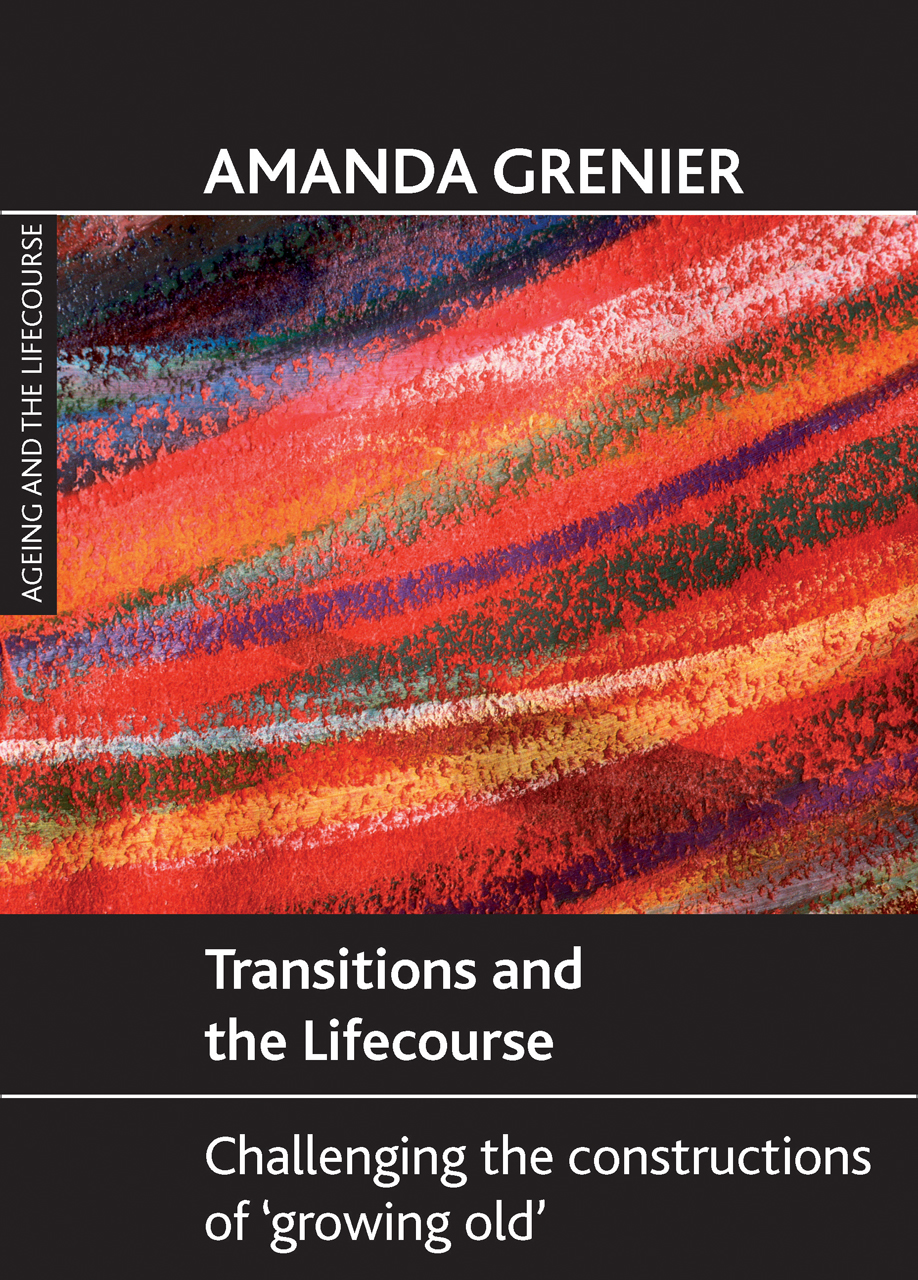Transitions and the Lifecourse Challenging the Constructions of ‘Growing Old’
Amanda Greener
256 pages, pbk £26.99,
Policy Press 2012, ISBN 978 1 84742 691 8.
I have been glad to revisit this book that explores the way we narrate age. It has helped me ( again ) to think about how we frame age.
Most of us in middle age have the experience of living with the experience of our ageing parents. They can force us to consider what shape ageing might take in us and indeed whether the patterns of our transitions might reflect theirs. We might struggle with the similarities and differences between generations. These connections might be shaped by our work, our lifestyle, our inner life and health. We might wonder how far we have any control over the way we age if we think about it at all! And as I write with the death of my Father, nearly five years after my Mother these questions remain. What does mortality, fragility and human boundedness mean for us?
Our thinking is shaped by our experiences and the culture we inhabit with its dominant ways of interpreting life. This book, with skill, learning and clarity asks the reader to consider how we might understand the nature of age and the way we age especially in later life. Transitions and the Lifecourse describes, investigates and challenges some of the dominant interpretations of transitions in late life.
Amanda Grenier, an academic working at McMaster University in Canada aims for the widest possible readership by taking a cross-national and interdisciplinary comparative approach to aging. The book offers an independent and sometimes radical voice as it combines a review of theory, policy and practice. The reader is also introduced to the voices of older people as a key element in digging deeper into the meaning of ageing, its stages and challenges.
The book is organised into two parts. Part one offers an overview of the context of growing old as it explores the nature of transition in late life. It does so within a multidisciplinary approach in order to build up an overview of the intersections of policy, practice, and experience as it describes a number of socio-cultural constructs of late life. Part two asks the reader to consider whether decline into old age is a one way street with all the inevitable diminishments and frustrations. We are asked to rethink transition, social location, ‘othered’ constructs of age and impairment in late life. Grenier completes this volume with a chapter on future directions and what areas need further consideration. The book has an extensive set of references and comprehensive index.
I shall attempt to discuss some of these questions in a wider context as I work with others in challenging some of the ageism present in faith communities. There is a devaluing of older people and a widespread denial of the reality of physical decline. These social constructions of what old age means shapes social policy and thereby shapes the experiences of all who survive into late old age.
The book is primarily aimed at academics and students interested in social gerontology but its core ideas deserve further public and political debate. All of us, at whatever stage we are on the life course should be concerned with age and its meaning, shape and interpretation.
This volume has provided this reader with a wealth of questions and a different reading of social theory. The challenge is how to translate this research in practice.

